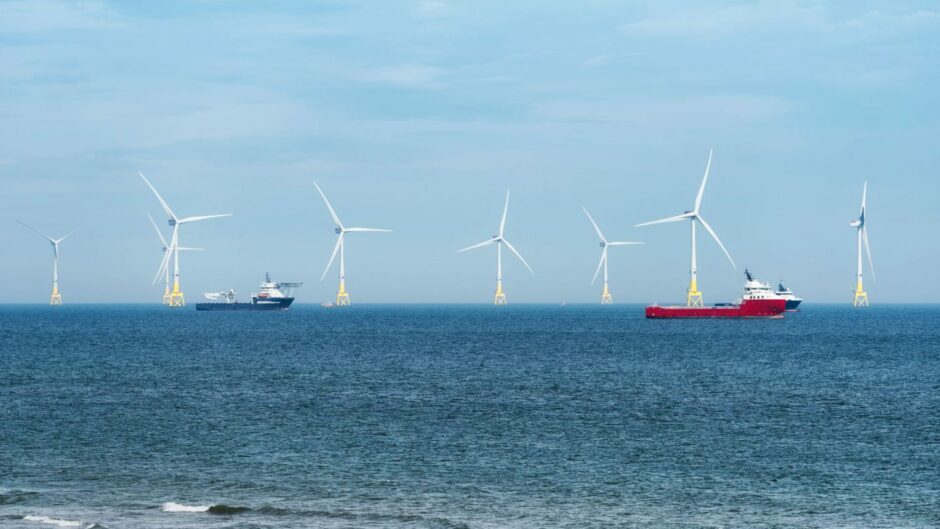
Crown Estate Scotland has opened the Innovation and Targeted Oil and Gas (INTOG) offshore wind leasing process, a crucial step in lowering emissions from North Sea oil and gas production.
Offshore wind developers are being invited to put forward project proposals for the leasing of seabed areas which would help power North Sea oil and gas fields, in a bid to lower emissions and support innovation across both sectors.
As of 10 August, the land and seabed manager will launch a two-week registration window, followed by the opening of the official application window on 24 August.
Applications can then be submitted until the window closes on 18 November.
Separate to the Scotwind leasing process, INTOG is intended to support the emissions reduction targets agreed last year between government and industry as part of the North Sea Transition Deal (NSTD).
Developers will be able to apply for rights to build small-scale offshore projects, of less than 100 megawatts (MW), with successful projects receiving leases of 25-50 years.
Following a recent consultation Crown Estate Scotland (CES) said its final documents have been amended to support early project development and reflect feedback from potential builders, including extending option periods from five to seven years and doubling lease periods to 50 years for electrification projects.
The areas of seabed which developers can apply for are set out in the Scottish Government’s Initial Plan Framework.
The agency said awards would be determined on “a mixture of price bid and quality” and will be split into two pots – one for smaller-scale innovation projects, and one for projects linked to oil and gas infrastructure.
As with Scotwind, developers will also be required to submit a Supply Chain Development Statement (SCDS) before they can sign an Option Agreement. These statements set out how each developer intends to source products, materials, and labour to construct, erect, and service projects.
They also provide an overview of intended spending commitments, with ambitions on how much each project would spend – and where – under a best-case scenario, as well as other details such as people and skills.
Depending on the volume and quality of submissions, the agency expects that applicants will be notified of the leasing results by the end of March 2023, when exclusivity agreements will then be finalised.
Meanwhile North Sea operators have already begun engineering studies to support electrification of key offshore hubs, while developer Cerulean Winds has voiced plans for multi-billion pound, gigawatt-scale applications.
CES director of marine, Colin Palmer said INTOG represented an “exciting opportunity” to help decarbonise the North Sea.
“Platform electrification, which INTOG will help deliver, will reduce North Sea oil and gas emissions while also supporting new skills and jobs. Taken as a whole, INTOG will play a significant role in helping us reach net-zero and meeting our energy requirements of the future.”
Cabinet Secretary for Net-Zero, Energy and Transport, Michael Matheson MSP also lent his support to the round, adding that “bold action” was needed to tackle the climate emergency.
“Renewable energy, including offshore wind, will deliver good, green jobs, benefits for communities and strengthened energy security as we transition to becoming a net-zero nation,” he said.
“Oil and gas continue to play an important role in our economy and it is therefore vital that the energy industry decarbonises as rapidly as possible. The INTOG leasing round presents significant opportunities to cut emissions across these operations while, crucially, enabling the offshore wind sector to expand, innovate, and drive forward Scotland’s ambition to be a renewables powerhouse.”
Further information on application is available via the Crown Estate Scotland website.
